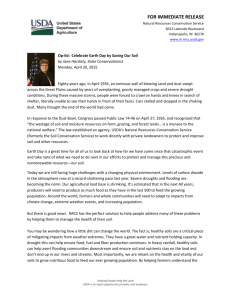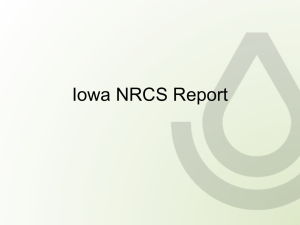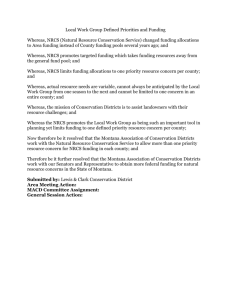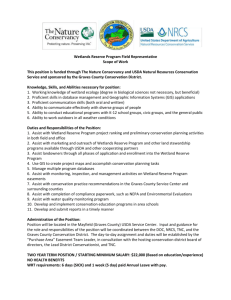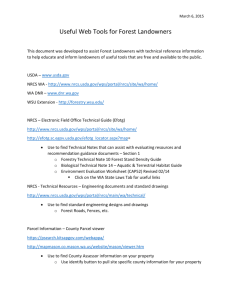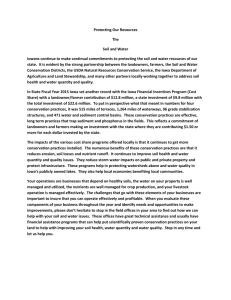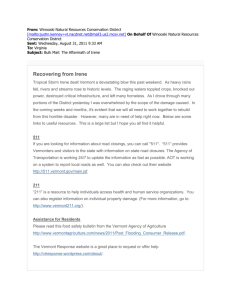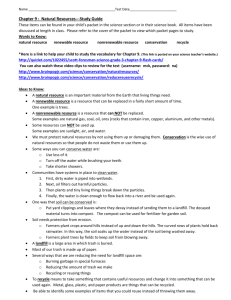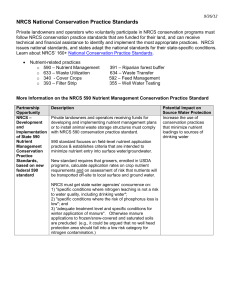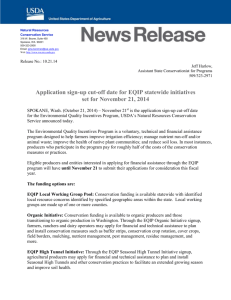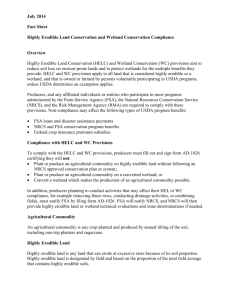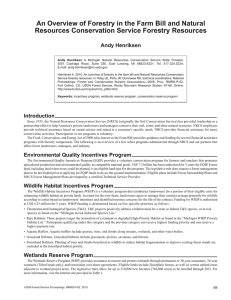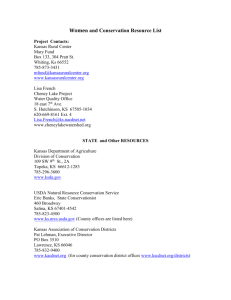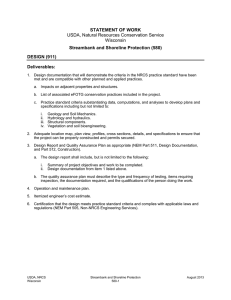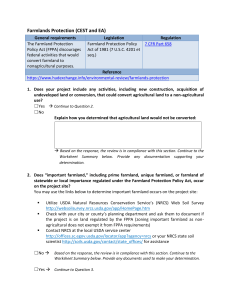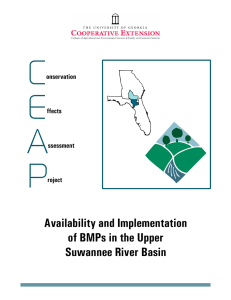Wet weather conservation issues
advertisement
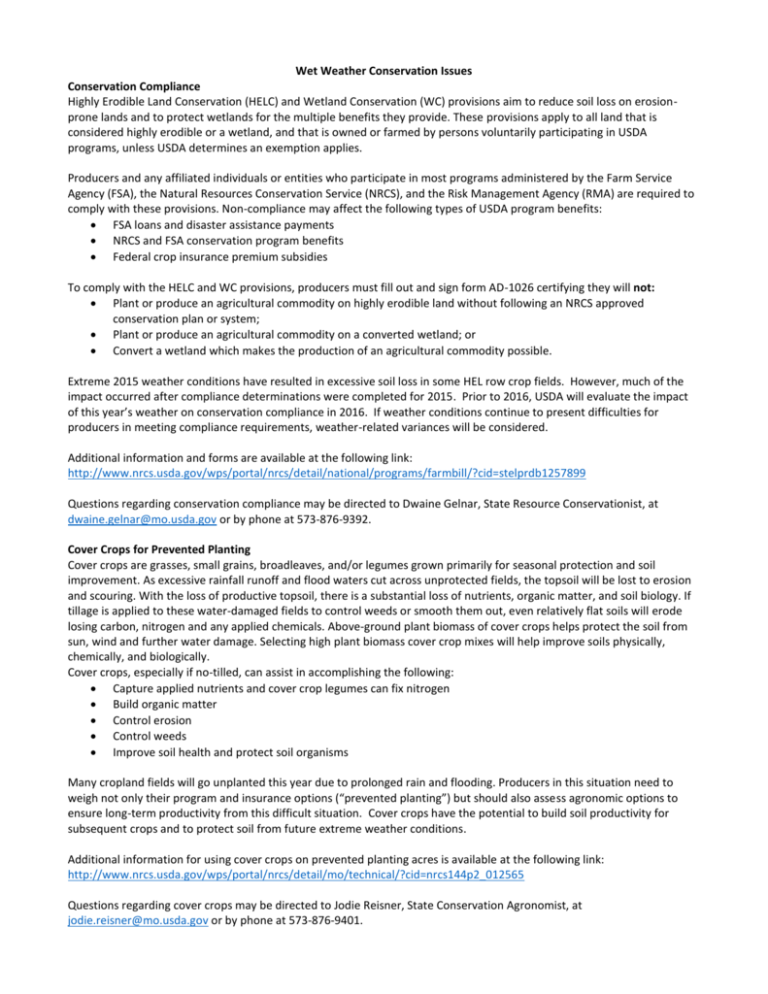
Wet Weather Conservation Issues Conservation Compliance Highly Erodible Land Conservation (HELC) and Wetland Conservation (WC) provisions aim to reduce soil loss on erosionprone lands and to protect wetlands for the multiple benefits they provide. These provisions apply to all land that is considered highly erodible or a wetland, and that is owned or farmed by persons voluntarily participating in USDA programs, unless USDA determines an exemption applies. Producers and any affiliated individuals or entities who participate in most programs administered by the Farm Service Agency (FSA), the Natural Resources Conservation Service (NRCS), and the Risk Management Agency (RMA) are required to comply with these provisions. Non-compliance may affect the following types of USDA program benefits: FSA loans and disaster assistance payments NRCS and FSA conservation program benefits Federal crop insurance premium subsidies To comply with the HELC and WC provisions, producers must fill out and sign form AD-1026 certifying they will not: Plant or produce an agricultural commodity on highly erodible land without following an NRCS approved conservation plan or system; Plant or produce an agricultural commodity on a converted wetland; or Convert a wetland which makes the production of an agricultural commodity possible. Extreme 2015 weather conditions have resulted in excessive soil loss in some HEL row crop fields. However, much of the impact occurred after compliance determinations were completed for 2015. Prior to 2016, USDA will evaluate the impact of this year’s weather on conservation compliance in 2016. If weather conditions continue to present difficulties for producers in meeting compliance requirements, weather-related variances will be considered. Additional information and forms are available at the following link: http://www.nrcs.usda.gov/wps/portal/nrcs/detail/national/programs/farmbill/?cid=stelprdb1257899 Questions regarding conservation compliance may be directed to Dwaine Gelnar, State Resource Conservationist, at dwaine.gelnar@mo.usda.gov or by phone at 573-876-9392. Cover Crops for Prevented Planting Cover crops are grasses, small grains, broadleaves, and/or legumes grown primarily for seasonal protection and soil improvement. As excessive rainfall runoff and flood waters cut across unprotected fields, the topsoil will be lost to erosion and scouring. With the loss of productive topsoil, there is a substantial loss of nutrients, organic matter, and soil biology. If tillage is applied to these water-damaged fields to control weeds or smooth them out, even relatively flat soils will erode losing carbon, nitrogen and any applied chemicals. Above-ground plant biomass of cover crops helps protect the soil from sun, wind and further water damage. Selecting high plant biomass cover crop mixes will help improve soils physically, chemically, and biologically. Cover crops, especially if no-tilled, can assist in accomplishing the following: Capture applied nutrients and cover crop legumes can fix nitrogen Build organic matter Control erosion Control weeds Improve soil health and protect soil organisms Many cropland fields will go unplanted this year due to prolonged rain and flooding. Producers in this situation need to weigh not only their program and insurance options (“prevented planting”) but should also assess agronomic options to ensure long-term productivity from this difficult situation. Cover crops have the potential to build soil productivity for subsequent crops and to protect soil from future extreme weather conditions. Additional information for using cover crops on prevented planting acres is available at the following link: http://www.nrcs.usda.gov/wps/portal/nrcs/detail/mo/technical/?cid=nrcs144p2_012565 Questions regarding cover crops may be directed to Jodie Reisner, State Conservation Agronomist, at jodie.reisner@mo.usda.gov or by phone at 573-876-9401.



